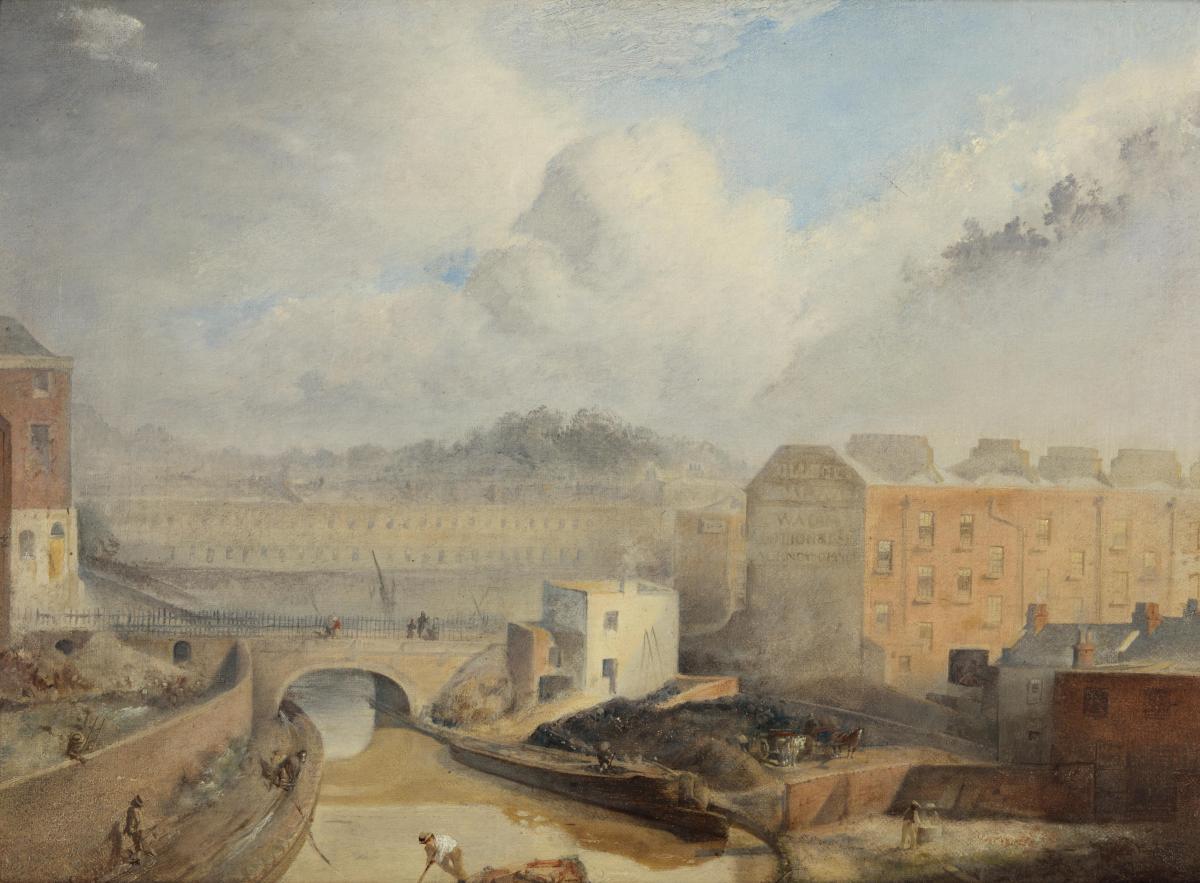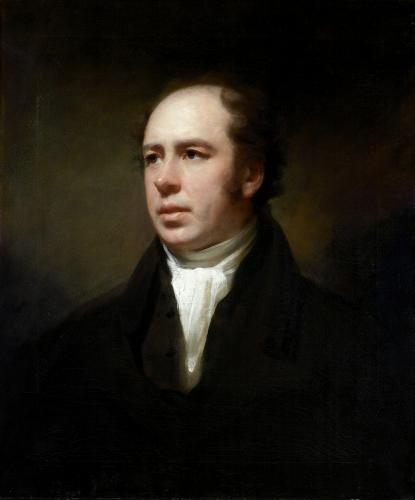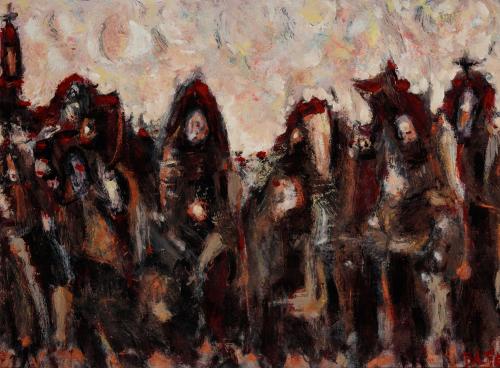

Price on application
This object is eligible for a Certificate of BADA Provenance
The BADA Standard
- Since 1918, BADA has been the leading association for the antiques and fine art trade
- Members are elected for their knowledge, integrity and quality of stock
- Our clients are protected by BADA’s code of conduct
- Our dealers’ membership is reviewed and renewed annually
- Bada.org is a non-profit site: clients deal directly with members and they pay no hidden fees
John Seguier 1785 – 1856
The Regent’s Canal at Bridge 28, College Wharf, later Lawford’s Wharf, Camden Town
Oil on canvas, painted circa 1838-1840
The Regent’s Canal runs from Paddington to Regent’s Canal Dock (now Limehouse Basin) on the Thames. Designed to connect the Paddington arm of the Grand Junction Canal to the docks, it is a broad canal to accommodate barge traffic. Construction began in 1812, it was opened as far as Hampstead Road Lock in 1816 and to Limehouse in 1820. The line had to go north from Paddington to skirt Nash and Burton’s imminent development running up to Regent’s Park. Next, the route of the canal round the north of Camden Town was chosen not only to follow the contour of the Fleet Valley but to avoid the then more developed areas to the south. Wharves and industry soon grew up along the line of the canal and with the building of railways in the 1830s and 1840s the rapid suburbanisation of this whole area transformed its character in a few years.
This fine topographical view of the working canal is precise in its detail. The location is Bridge 28, seen from the Camden Town side. It carries Great College Street, now Royal College Street. Building is in progress on the left of the painting, behind the high retaining wall. What was under construction was Lyme Terrace, a row of modest two storey houses mainly still extant. Lyme Terrace was built shortly after 185-181 Great College Street, probably in about 1838-1839. This suggests a date for the painting of around 1838-1840.
At the time he painted this, John Seguier (1785–1856) was living in Camden Town High Street. Characteristic of his paintings is a fascination with the effects of raking sunlight and its shadows on ground and buildings. His figures are distinctive, their movement well observed and deftly painted. This painting should be compared with Seguier’s 25.4 x 30.48 cm. canvas “Excavating Regent’s Canal with a view of Marylebone Chapel” now at the Yale Center for British Art. It was made in 1812-1813 and relates well to the present painting, showing the canal under construction but still in essence a tranquil rural scene bathed in morning sun.
When the Grand Junction Canal was first built as far as the village of Paddington, some in that still rural area saw it as a romantic enhancement to the landscape. Later, grand villas were built along parts of the Regent’s Canal at Little Venice and Regent’s Park. That was a very different aesthetic from the state of the canal north and east of Camden Town by 1840.
Provenance:
L. Evans, 1 Devonshire Terrace, Camden Town
This is inscribed in a 19th century hand on the back of the stretcher together with the title “ No. 1 View on Regent Canal”
A full note is available on request, identifying all the buildings seen in the painting with further information and images.
Dimensions
Oil on canvas, 25.4 x 35.3 cms.The BADA Standard
- Since 1918, BADA has been the leading association for the antiques and fine art trade
- Members are elected for their knowledge, integrity and quality of stock
- Our clients are protected by BADA’s code of conduct
- Our dealers’ membership is reviewed and renewed annually
- Bada.org is a non-profit site: clients deal directly with members and they pay no hidden fees




